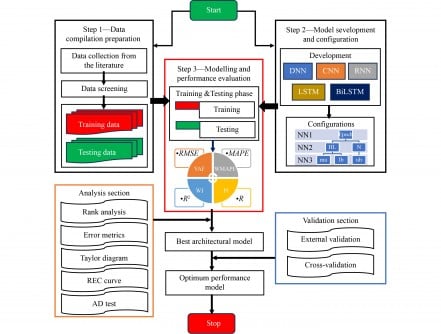Science
Researchers Leverage Deep Learning to Predict Pile Foundation Capacity

In a significant advancement for construction engineering, researchers from multiple institutions have developed a deep learning framework to accurately predict the bearing capacity of pile foundations. The study, titled “Prediction of Bearing Capacity of Pile Foundation Using Deep Learning Approaches,” involves experts from the SRM Institute of Science and Technology, National Institute of Technology Patna, Thammasat University, and Rajasthan Technical University. This research addresses the traditional challenges faced in evaluating pile foundations, which are essential for transferring loads from structures to soil or bedrock.
Accurate prediction of bearing capacity is vital for ensuring the structural integrity and safety of buildings. The study highlights the limitations of conventional high-strain dynamic load tests (HSDT), which, despite being more efficient compared to static load tests, remain costly and time-consuming. Traditional empirical models have struggled to effectively capture the complex interactions between piles and soil, while existing machine learning approaches often contend with limited data and performance issues.
Innovative Deep Learning Techniques
This research explores the performance of five distinct deep learning algorithms: Deep Neural Networks (DNN), Convolutional Neural Networks (CNN), Recurrent Neural Networks (RNN), Long Short-Term Memory (LSTM), and Bidirectional LSTM (BiLSTM). The team utilized a dataset consisting of 257 dynamic pile load tests to enhance prediction accuracy.
Notably, this study is the first to investigate the impact of multicollinearity on the performance of these models. The researchers conducted a comprehensive analysis using various statistical performance metrics, including the coefficient of determination and root mean squared error. Validation of model performance was achieved through external validation approaches, supported by graphical interpretations using regression error characteristics curves and Taylor diagrams.
Results and Implications
The findings indicate that the DNN model yielded the highest prediction accuracy, achieving a coefficient of determination of 0.97 and a root mean squared error of 0.0413 during the training phase. In the testing phase, the model maintained a coefficient of determination of 0.9 and a root mean squared error of 0.08. The BiLSTM model demonstrated strong performance as well, surpassing the LSTM model by effectively processing input sequences in both forward and backward directions.
Moreover, the study identified that ram weight, which exhibited a significant level of multicollinearity, plays a crucial role in predicting pile bearing capacity. The RNN model was noted to perform the least effectively among the five models, underscoring the detrimental effects of multicollinearity on its accuracy.
This research provides an innovative and reliable tool for engineers to predict the bearing capacity of pile foundations, contributing valuable insights for construction practices. The paper, authored by Manish Kumar, Divesh Ranjan Kumar, Jitendra Khatti, Pijush Samui, and Kamaldeep Singh Grover, is published in Frontiers in Structural and Civil Engineering in 2024, volume 18, issue 6, pages 870–886. The corresponding author, Jitendra Khatti, can be contacted via email at [email protected].
This study marks a pivotal step in leveraging advanced technologies in engineering, promising improved reliability in the assessment of pile foundations.
-

 Lifestyle3 months ago
Lifestyle3 months agoLibraries Challenge Rising E-Book Costs Amid Growing Demand
-

 Sports3 months ago
Sports3 months agoTyreek Hill Responds to Tua Tagovailoa’s Comments on Team Dynamics
-

 Sports3 months ago
Sports3 months agoLiverpool Secures Agreement to Sign Young Striker Will Wright
-

 Lifestyle3 months ago
Lifestyle3 months agoSave Your Split Tomatoes: Expert Tips for Gardeners
-

 Lifestyle3 months ago
Lifestyle3 months agoPrincess Beatrice’s Daughter Athena Joins Siblings at London Parade
-

 World2 months ago
World2 months agoWinter Storms Lash New South Wales with Snow, Flood Risks
-

 Science3 months ago
Science3 months agoTrump Administration Moves to Repeal Key Climate Regulation
-

 Business3 months ago
Business3 months agoSoFi Technologies Shares Slip 2% Following Insider Stock Sale
-

 Science3 months ago
Science3 months agoNew Tool Reveals Link Between Horse Coat Condition and Parasites
-

 Science2 months ago
Science2 months agoSan Francisco Hosts Unique Contest to Identify “Performative Males”
-

 Sports3 months ago
Sports3 months agoElon Musk Sculpture Travels From Utah to Yosemite National Park
-

 Science3 months ago
Science3 months agoNew Study Confirms Humans Transported Stonehenge Bluestones








